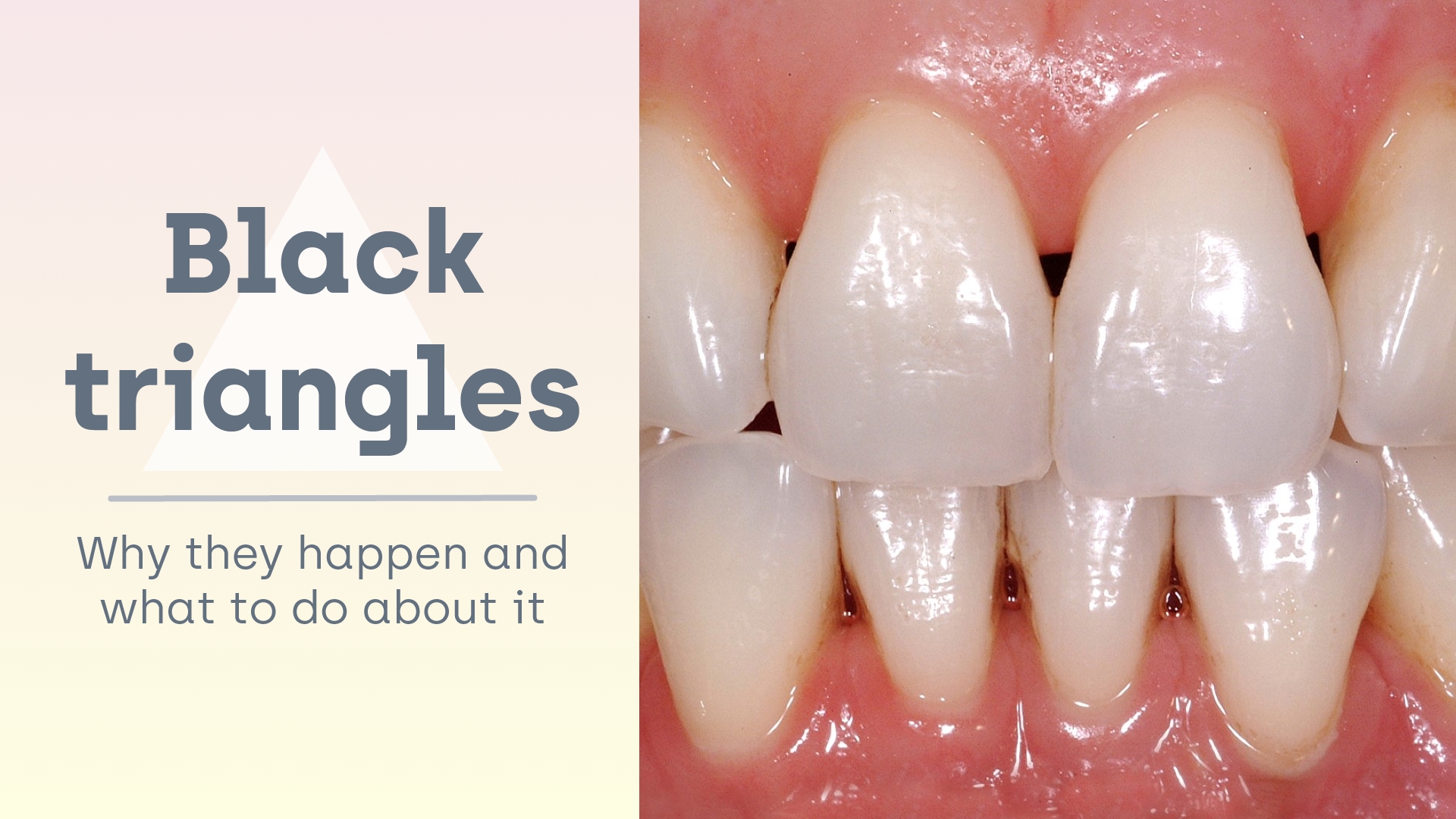
Black Triangles – Why they happen and what to do about it

Key points:
- Black triangles are naturally occurring spaces between triangular shaped teeth touching each other.
- These spaces in between teeth, allow for better cleaning with small brushes.
- IPR or cosmetic bonding are the two most common procedures to fix black triangles in teeth.
- You can develop black triangles after an orthodontic treatment.
If you are thinking about getting your teeth straightened because they are overlapping, crowded or crooked, you may have been told about black triangles. But what are black triangles? Here we will explain everything you need to know.
#1 What causes black triangles?
Black triangles are naturally occurring spaces between teeth due to two triangular shaped teeth touching each other.
#1.1 Is it normal to have black triangles?
According to an article posted in the British Dental Journal these are a few of the most common reasons for the formation of black triangles:
- Tooth space (space between teeth);
- Diverging roots deriving from post-orthodontic treatments;
- Age;
- Gum biotype and/or gum disease.
Apart from those, not maintaining proper oral hygiene, smoking, and even pregnancy can also lead gums to recede – creating more unwanted space between teeth.
#1.2 Health risks and benefits
Vastly overseen as a purely dental cosmetic issue it can also be a food magnet! It is nothing but easy to accumulate plaque in between teeth gaps, thus leading to a higher chance of cavities or even abscesses.
They are completely normal and some type of spacing is always natural and even beneficial. This type of space can actually help to improve cleansability, gum health, and overall dental hygiene. Having said that, let’s take a look at how to look after teeth…
#1.3 Dental hygiene tips
Here are a few of our top tips for maintaining good oral hygiene:
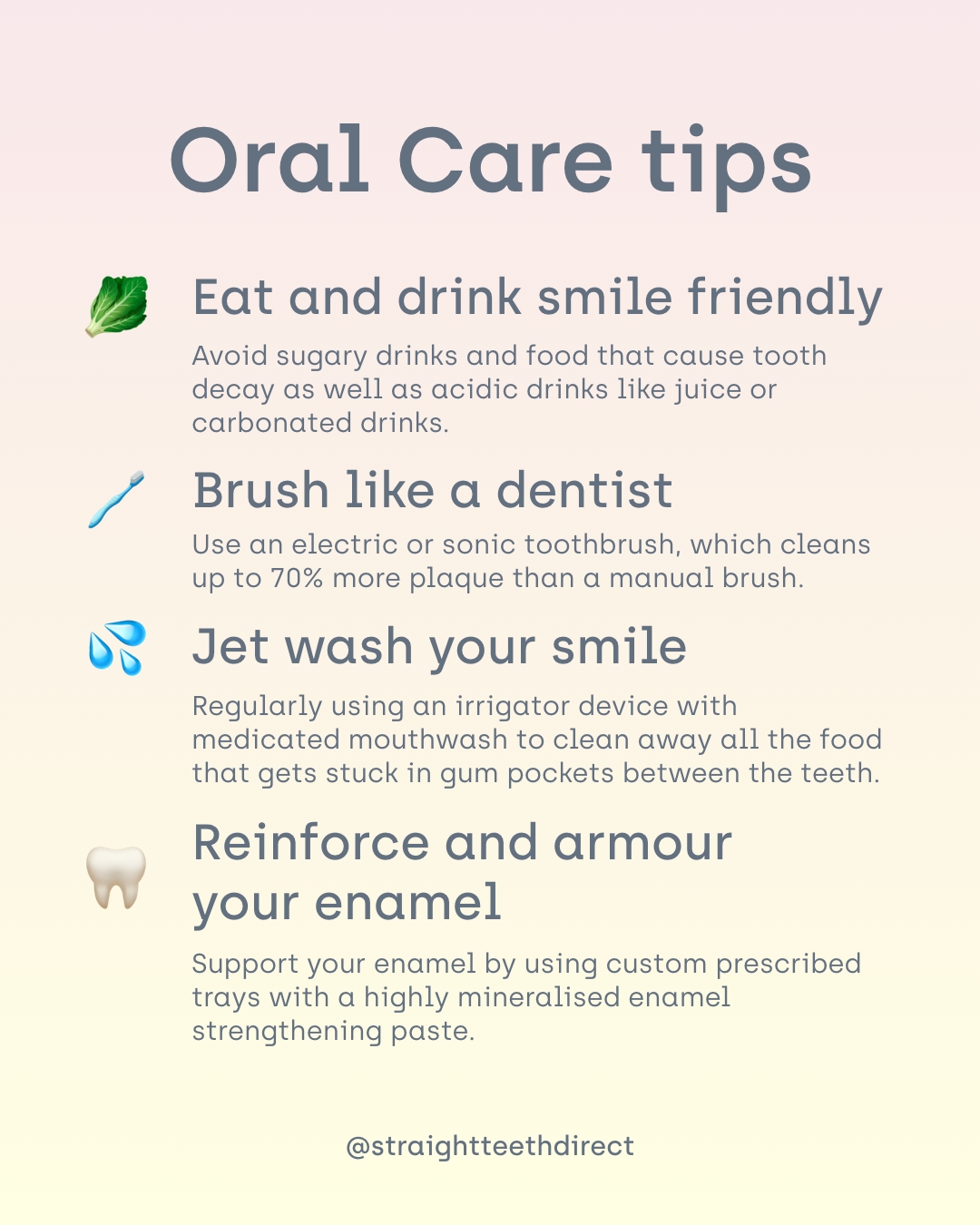
#2 Which tooth shape will likely cause black triangles
Not all tooth shapes will result in the formation of black triangles, so depending on your individual dental structure, you may or may not have them. But did you know it’s actually less common to not have any gaps at all?
Gaps or no gaps, this often comes down to tooth shape, which generally falls into one of 3 categories – rectangular, oval or triangular shape. Here’s an overview and explanation of the three main tooth shapes, so you can see which category your teeth fall into and what type of gap or black triangle, if any, is natural for your teeth type.
2.1 Rectangular tooth shape
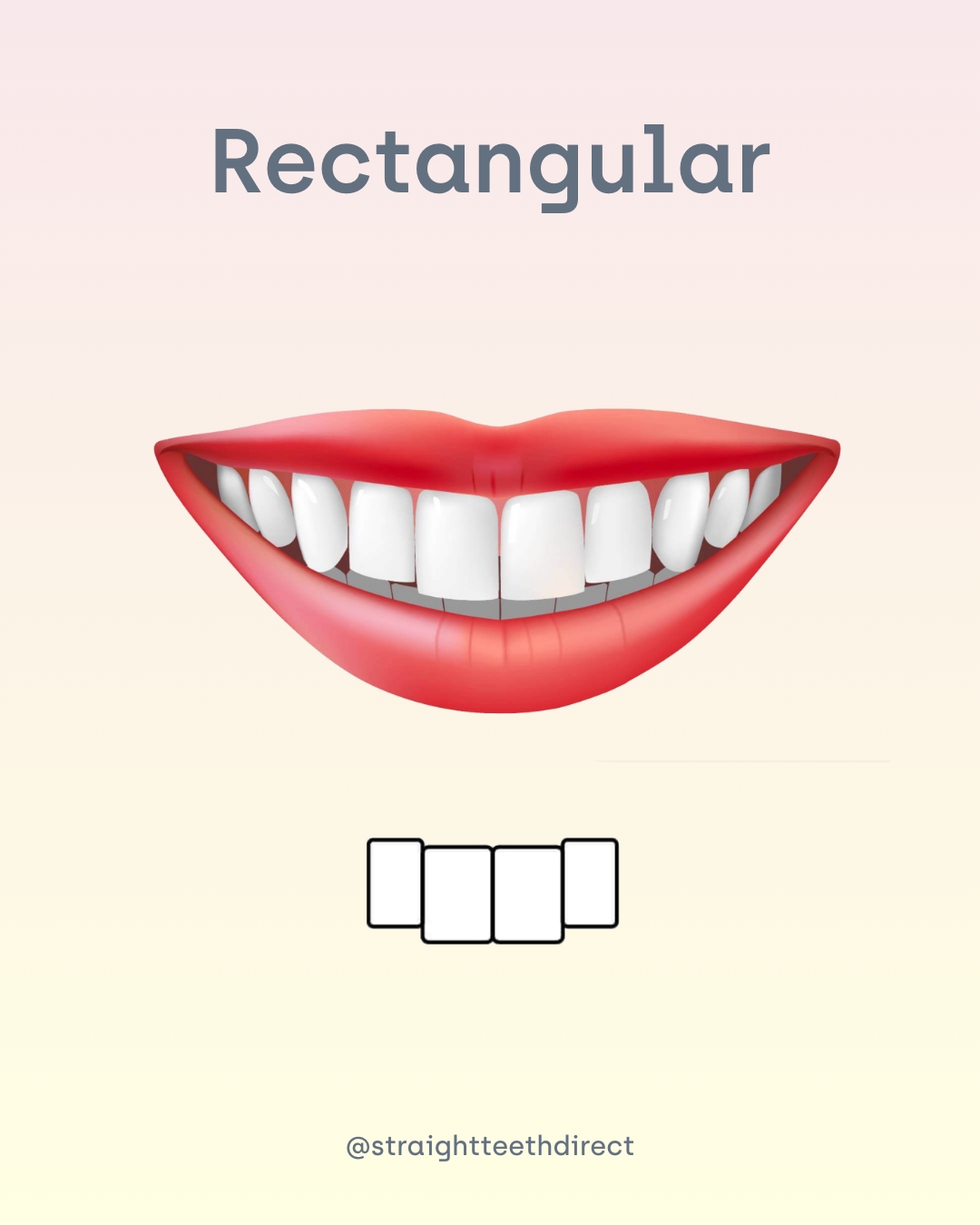
Rectangular teeth have straight parallel edges, so the teeth fit next to each other without any gaps on the top or bottom. Therefore, rectangular shaped teeth do not create space between teeth (the teeth touch along a large part of the surface).
2.2 Oval tooth shape
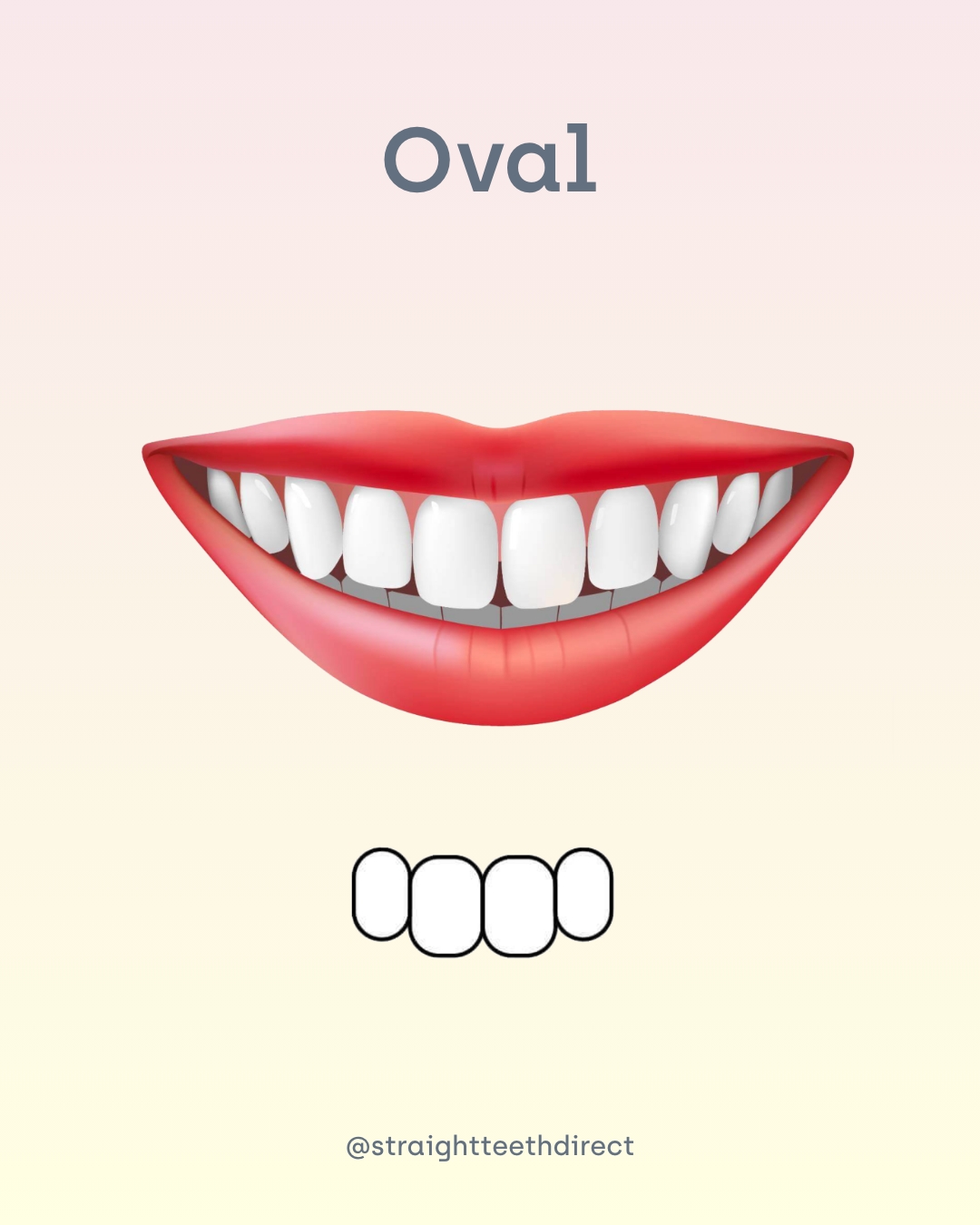
Oval shaped teeth have rounded edges at the bottom, so there is a space at the bottom of the edges where they touch – this is called an embrasure. As you can see, they are also less likely to occur in this scenario, as the tops of the teeth still fit next to each other quite snugly.
2.3 Triangular tooth shape
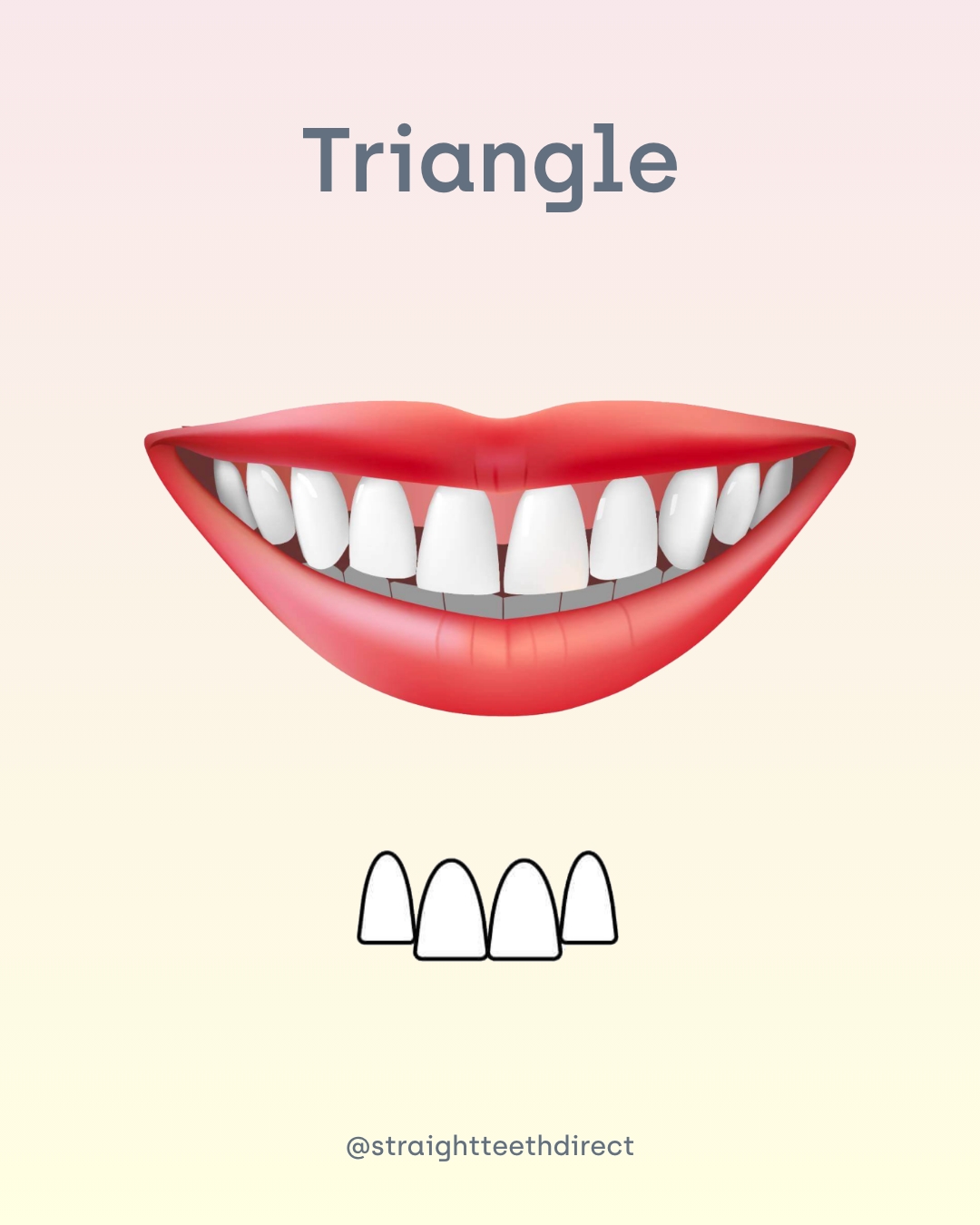
Triangular teeth have sloping edges just like a triangle, so that when teeth touch at the bottom edge (the wider edge), it creates a space between the top teeth. This gap is what we call a black triangle.
Tooth shape has a big influence on the overall appearance of your smile and your dental health. If the gaps are bothering you, you’ll probably be asking yourself “can black triangles in teeth be fixed?” Sure thing!
#3 Can black triangles in teeth be fixed?
So, how can you get rid of black triangles? There are 2 main ways of removing them: IPR and cosmetic bonding.
3.1 Interproximal Reduction (IPR)
If the it is bothering you too much, your dentist can perform something called interproximal reduction, or IPR.
For this, a tiny amount of your tooth is filed off providing enough space for your teeth to fit together. Obviously, there is only so much filing that can be done.
3.2 Cosmetic bonding
Alternatively, if the gaps are too large, you can have cosmetic bonding performed, which is basically filling the gap with white material, which hardens under a UV light to resemble your actual tooth.
#4 Can you develop black triangles after orthodontic treatment?
The short answer is yes. After orthodontic treatment, your teeth should have reached their optimum, straightest position. In some cases, a little black triangle may appear between teeth as a result of a triangular tooth shape. They can vary in size and are a very normal result in orthodontic treatment. Having small gaps can be helpful in maintaining proper dental health, as brushing and flossing tends to be easier!
If you’re still curious about black triangles and want to check how your teeth can potentially look after teeth straightening, feel free to browse our before and after gallery here.

Still thinking about it?
Fill in your email to receiveyour free guide!


















